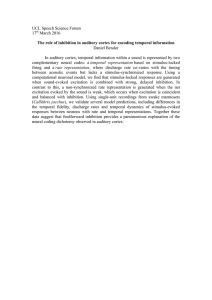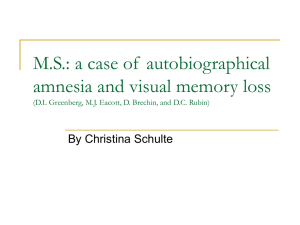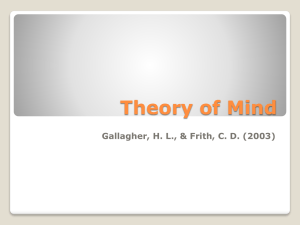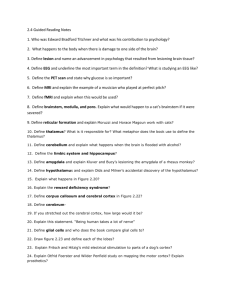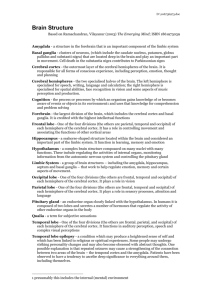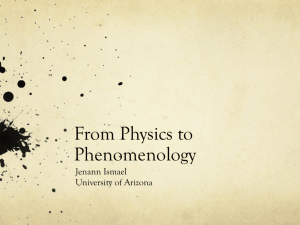Theory of Mind
advertisement
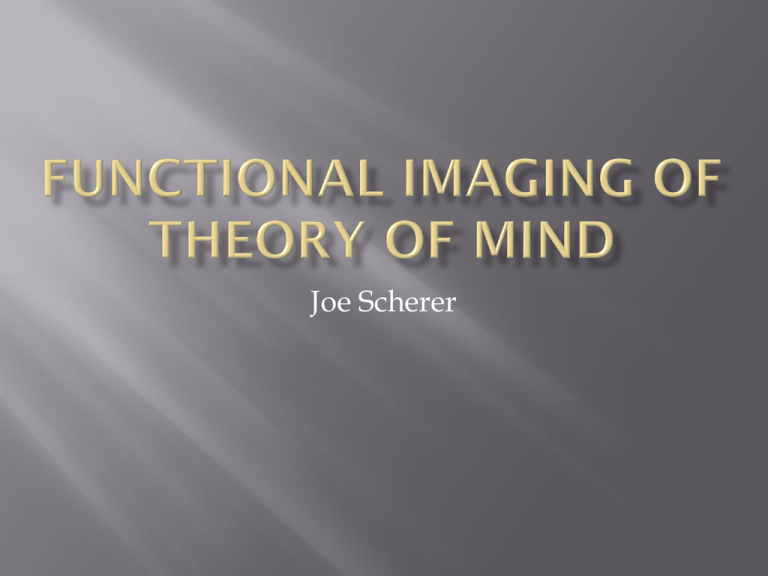
Joe Scherer Our ability to predict other people’s behavior by attributing them independent mental states such as beliefs and desires Gives us the ability to deceive Allows us to cooperate and empathize Read others body language Anticipate other’s behavior Uses Magnetic Resonance Imaging or MRI to measure blood flow in the brain due to neural activity Has implicated three primary areas experiencing an increase in blood flow when theory of mind activities are in progress Anterior Paracingulate Cortex Superior Temporal Sulci (STS) Temporal Poles Amygdala Orbitofrontal Cortex Only 1 fMRI study supports the Amygdala and Orbitofrontal Cortex’s involvement Abnormalities in understanding another person’s mind is one of the core properties of Autism Multiple Theory of Mind tasks have been formed in order to distinguish autism in children Seeing is believing Mental/Physical Distinction Appearance Reality Distinction Friend or Foe False Belief Task Anterior Paracingulate Cortex, Superior Temporal Sulcus and the Temporal Lobes consistently show an increase in blood flow when Theory of Mind tasks are being performed The Decoupling Mechanism The studies of Gallagher and McCabe provide evidence to support this idea These 2 studies are important for two reasons 1. The only difference in the conditions was the stance adopted by the participants 2. They used on-line mentalizing instead of offline Online is conducted in real time Offline is where an experimenter asks participants to imagine a scenario in their past and retrospectively explain the behavior of the person involved Currently felt Emotions Autobiographical Memory Perception of Pain It is active during the “rest” period in many studies of cognitive processes Mentalizing about our own mental states Associated with understanding the meanings of stories and cartoons involving people Causality and Intentions Facial Emotion Taking the Self Perspective Along with the Temporal Poles may relate to abilities that aid in mentalizing Activated during Recollection of Familiar Faces and Scenes Recognition of Voices Emotional Memory Retrieval Autobiographical Memory Retrieval These results suggest the Temporal Poles to be involved in Semantic Memory, which useful in Scripts Activated in response to untrustworthy faces Socially Salient Stimuli fMRI shows an increase of blood flow during intentional and unintentional embarrassing acts Leads researchers to believe it is involved in a system that recognizes the negative reactions of others Unlikely to be directly responsible for Theory of Mind

